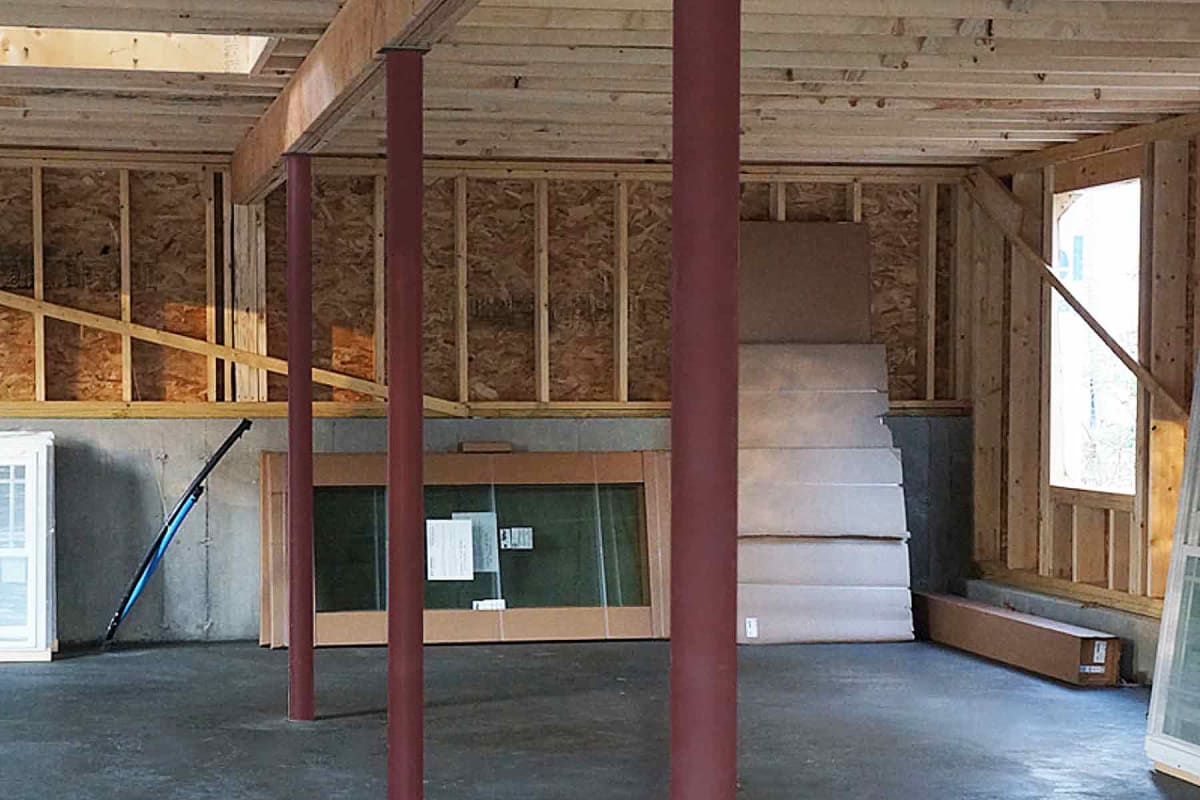
How much does a Lally column replacement cost?
How much does a Lally column replacement cost?
$1,300 – $2,500 average cost per column
Average cost to replace a Lally column
Lally column replacement costs $1,300 to $2,500 per column on average, including installation. Lally columns are steel structural support posts filled with concrete. Contractors use Lally columns for permanent support, during basement repairs, or even for renovation projects that involve removing load-bearing walls.

| National Average Cost | $1,900 |
| Minimum Cost | $1,000 |
| Maximum Cost | $4,000 |
| Average Range | $1,300 to $2,500 |
What is a Lally column?
A Lally column is a steel load-bearing post used in construction. Contractors fill the post with concrete to provide extra support and fire resistance, especially in multi-story buildings. Lally columns are most commonly found in industrial buildings and malls, but you may also see them in residential basements or open-concept homes.
Most Lally columns are permanent. However, construction workers often use temporary columns, also called jack posts, when removing load-bearing walls or fixing sagging floors. Jack posts are adjustable in height, but Lally columns are fixed.
Lally column cost factors
A few different factors can influence the cost to install or replace a Lally column:
Labor costs: General contractors charge $50 to $150 per hour or 10% to 20% of the total construction project cost.
Column size: Lally columns are anywhere from 3 to 14 feet tall and can hold tens of thousands of pounds. Some companies charge per linear foot or charge extra for larger columns.
Materials: Steel prices are about $10 to $20 per linear foot. Pouring concrete costs $5 to $10 per square foot with installation.
Project complexity: Costs are higher if the project involves removing or relocating walls. Removing a wall costs $500 to $2,000 for a non-load-bearing wall or $4,000 to $15,000 for a load-bearing wall.

Installation process
A contractor or structural engineer starts by inspecting your house, writing a report that includes the recommended size and footing requirements of the column. Then they will:
Obtain any necessary building permits.
Dig and pour concrete for the column footings, at least 4 square feet.
Wait for the footing to fully cure for at least a week.
Install the Lally column on top of the concrete footing.
Pros and cons of Lally columns
Lally columns are a crucial tool that contractors use to carry out construction and renovation projects. However, they come with some pros and cons:
| Pros | Cons |
|---|---|
|
|
Lally column FAQs
Where do you buy Lally columns?
You can buy Lally columns online or from local hardware or construction supply stores like Home Depot, Lowe's, or Ace Hardware.
Are Lally columns permanent?
Lally columns can be either permanent or temporary, depending on the purpose of your project. Temporary columns are most often used in renovations involving removing a load-bearing wall. Permanent Lally columns are typically seen in modern or open-concept homes and in basements.
Do Lally columns need footings?
Yes, Lally columns require footings to make sure the base is strong enough to provide the support they need. If you're building in your basement, some contractors will use the foundation as a footing for temporary Lally columns.
How far apart should Lally columns be?
There is no universal standard for how far apart you should space Lally columns. However, most builders space them 10 to 12 feet apart for residential structures. Always consult a structural engineer to determine the specifics of your building project.
Getting estimates from Lally column installers
Follow these tips to make sure you get accurate estimates from a contractor or structural engineer near you:
Contact several contractors for estimates and compare costs.
Read reviews for their companies on HomeGuide and Google.
Ask how much experience they have specifically with Lally columns.
Ask if they use flat fees or hourly rates.
Request a detailed, written estimate before they start.
Questions to ask the structural engineer or contractor
Ask these important questions before hiring a structural engineer or general contractor:
Are you licensed, bonded, and insured?
How much experience do you have installing or replacing Lally columns?
How much will this project cost? Does that include materials and labor?
Can you give me references or show me testimonials from previous customers?
How long will the installation or replacement take?
Will you handle any necessary repairs to the flooring or ceiling?
How do you handle any damage that happens on the job?
What is your fee structure? Do you offer any kind of financing?
How many Lally columns will this project need? How far do you space them from each other?
How long will the concrete take to fully cure before you install the column?
Will I need to pay a deposit before you start?